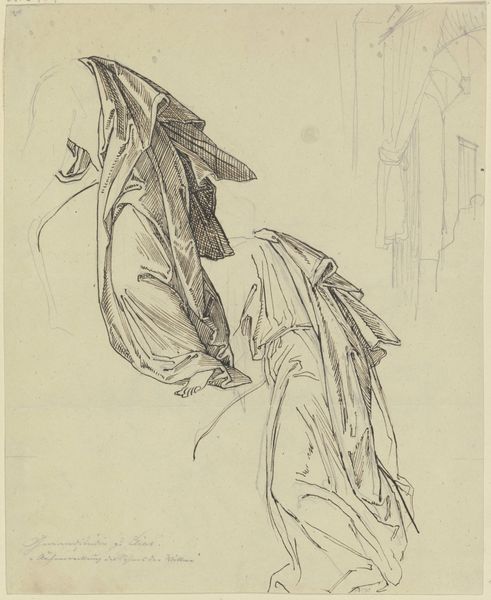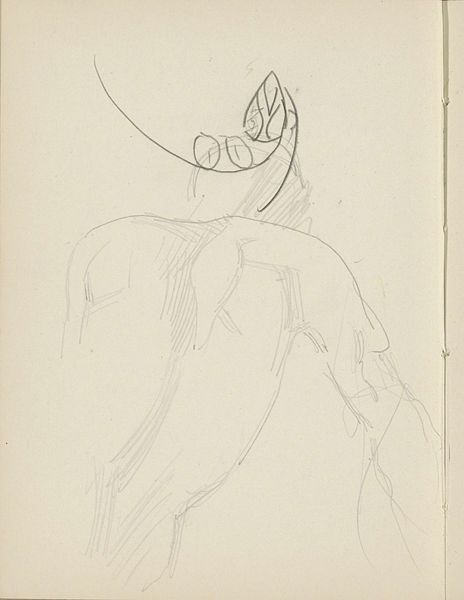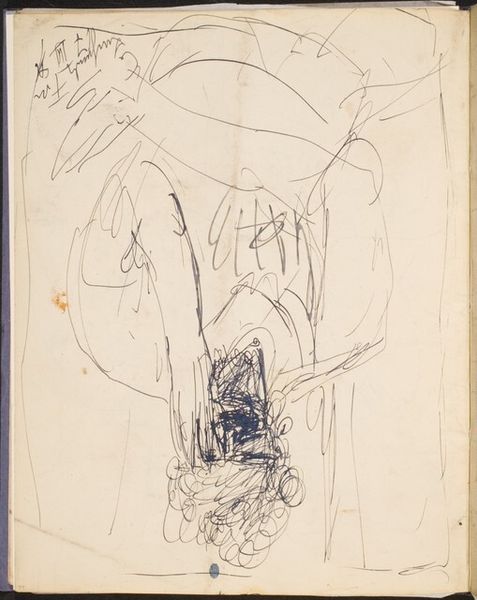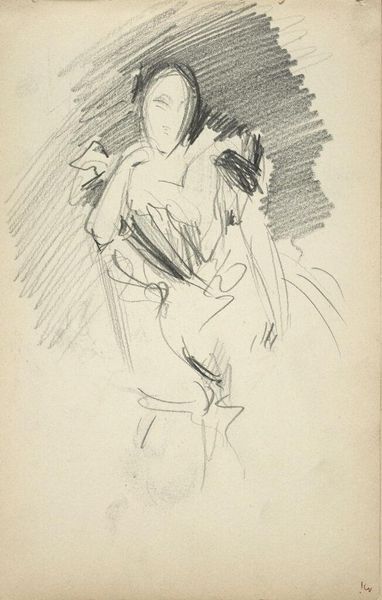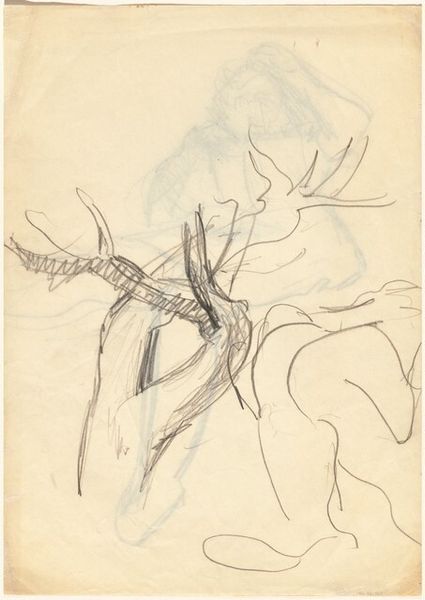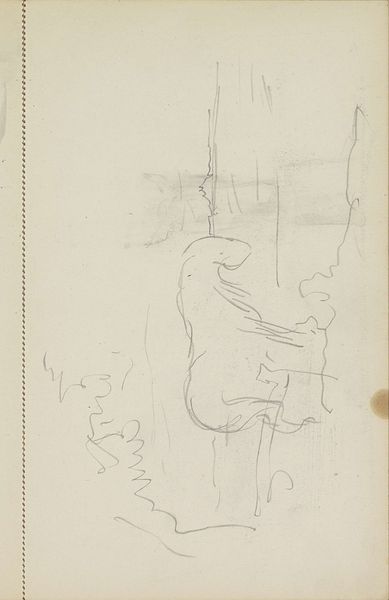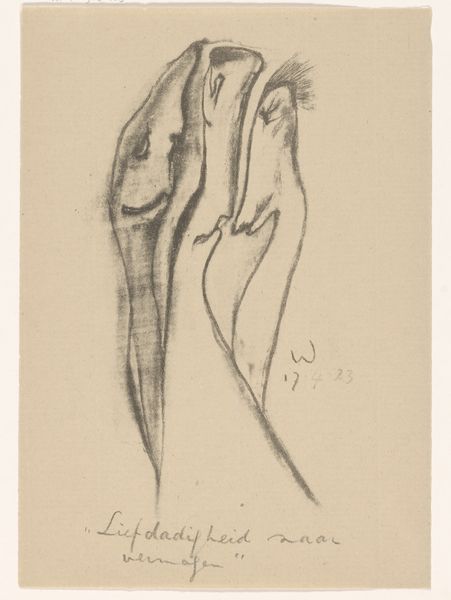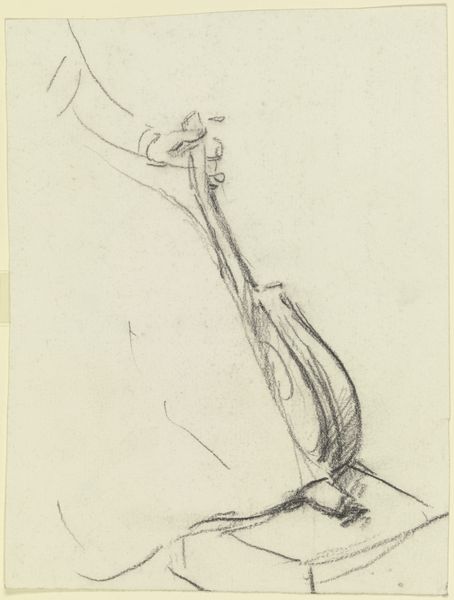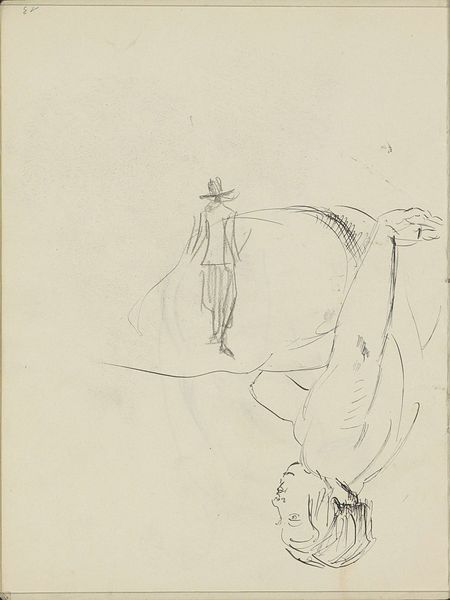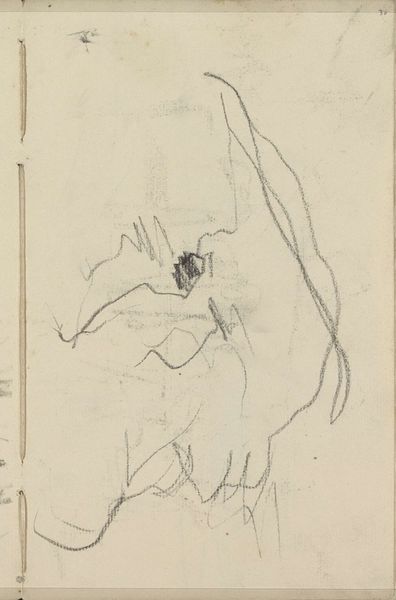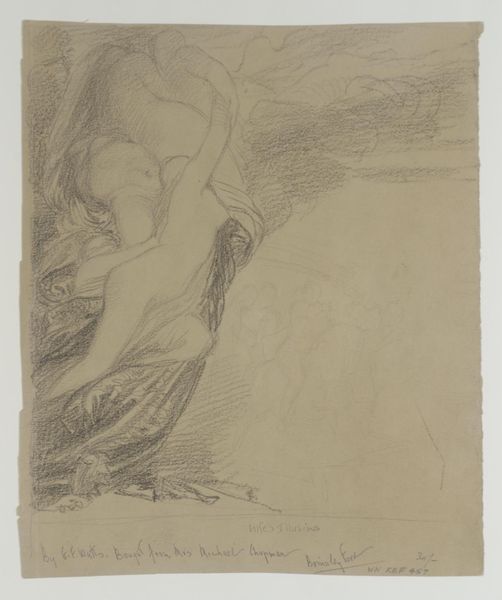![Two Nudes in an Imaginary Setting [recto] by Mark Rothko](/_next/image?url=https%3A%2F%2Fd2w8kbdekdi1gv.cloudfront.net%2FeyJidWNrZXQiOiAiYXJ0ZXJhLWltYWdlcy1idWNrZXQiLCAia2V5IjogImFydHdvcmtzLzg2NGFmYzA0LTIwYjAtNGRhMy04ZWUxLTc5ZTA4N2FhYWM4Yy84NjRhZmMwNC0yMGIwLTRkYTMtOGVlMS03OWUwODdhYWFjOGNfZnVsbC5qcGciLCAiZWRpdHMiOiB7InJlc2l6ZSI6IHsid2lkdGgiOiAxOTIwLCAiaGVpZ2h0IjogMTkyMCwgImZpdCI6ICJpbnNpZGUifX19&w=1080&q=75)
drawing, pencil
#
portrait
#
drawing
#
figuration
#
pencil
#
abstraction
#
nude
Copyright: National Gallery of Art: CC0 1.0
Curator: We're looking at "Two Nudes in an Imaginary Setting [recto]", a pencil drawing by Mark Rothko. Editor: There's a real fragility to this drawing. It feels unfinished, like a fleeting thought captured on paper. The starkness is interesting given Rothko's later explorations of color. Curator: Rothko is primarily celebrated as a colorist, yet this sketch underscores an early engagement with figuration, a dance between abstraction and representation in his practice, inviting questions about societal and personal conceptions of the body. What is visible and what remains hidden, what is considered worthy of portrayal? Editor: Indeed, the linework is incredibly sparse. Observe how a few carefully placed strokes suggest volume and form, relying on the viewer to complete the picture. There's a real sense of negative space playing a crucial role. I wonder, could this intentional lack of definition be a rejection of representational norms? Curator: Possibly. Or it may represent Rothko's negotiation of his identity. As a Jewish immigrant navigating the American art scene, he faced constant pressures to assimilate. Does this stylistic ambiguity reflect his own struggle to define himself? Also, consider the power dynamics inherent in the nude, traditionally a site of objectification, how Rothko subtly disrupts that narrative with this intimate yet impersonal sketch. Editor: An interesting point, although it is also about composition. The arrangement of the figures, one reclining and the other more upright, creates a subtle tension and dynamism. The loose sketch above feels like an unfinished structure above. These fleeting suggestions seem designed to tease our perception rather than fully resolve into a concrete form. Curator: In the absence of fixed identity markers, the figures become placeholders onto which viewers project their own biases and desires. Rothko's sketch provides an important prefiguration of his later color fields in which viewers must search for their meaning and the broader narrative is one of the universal human search for meaning, a search to find oneself as we build a society together. Editor: I concede that the social elements must not be entirely excluded here, however in observing the intrinsic qualities, I can certainly say this piece grants us a fascinating glimpse into Rothko's process, showcasing his command of line and form. The raw and ephemeral quality creates a strangely evocative work despite its seeming simplicity. Curator: Agreed. Hopefully we've encouraged new appreciation of this fascinating sketch and discussion of what the work might reflect about the period.
Comments
No comments
Be the first to comment and join the conversation on the ultimate creative platform.
